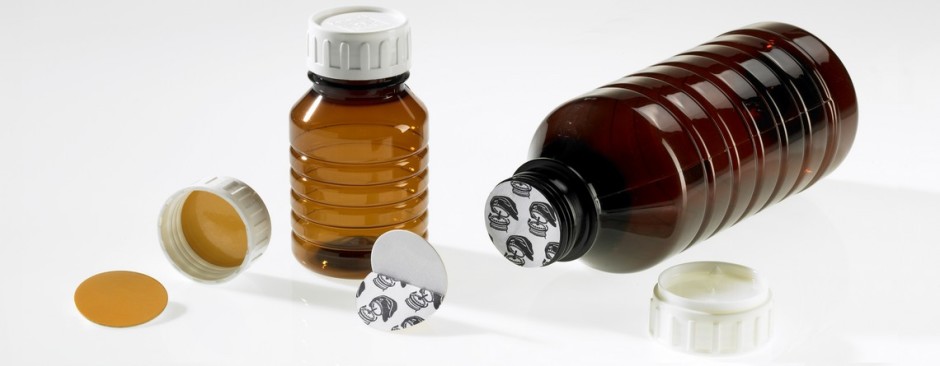Often there are clients packaging a “pure” product which they are packaging in Glass.
The problem they face is that they are having leaking issues and also want some tamper evidence or freshness seal. In the case of dry products like capsules or powders there are some good options. Take for example coffee which is often packed in glass and has a foil freshness heat seal across the opening of the Jar.
In the case of wet and oily products the Induction Sealing option is not available. The heat sealing process in induction sealing relies on a layer of material laminated to the foil becoming “wet” when it is heated and then setting or drying when the foil cools down. In the case of plastics bottles this sealing layer is usually a plastic based sealing layer that “melts” into the existing plastic of the container. For glass with very high melt temperatures the sealing layer never gets anywhere near hot enough to “melt” into the glass so this sealing layer is usually adhesive based. Wet products and oily products tend to seep into this seal after the sealing process, eventually weakening or neutralising the adhesive and breaking the seal.
Another hurdle to get past with glass jars is that more often than not they are designed or supplied with metal caps. The induction sealing process relies on an uninterrupted magnetic field to work on the foil layer of an induction seal to heat that seal. Metal caps or closures interrupt the seal and the metal cap tends to absorb the heat sealing energy before the induction material receives this energy.
 While often it is environmental or health based products packed into glass, ironically these manufactures are making a much larger impact on the environment in using glass packaging than their counterparts using PET packaging.
While often it is environmental or health based products packed into glass, ironically these manufactures are making a much larger impact on the environment in using glass packaging than their counterparts using PET packaging.
We will not enter into the argument about whether Glass or Plastic is best to package products but rather we will focus on the limitations lifted on induction sealing when using plastic packaging with plastic lids.
There are many products that transition from glass to plastic and are using plastic packs that look like glass yet still have metal lids. These products can be induction sealed using Capless induction sealing. This is a process where the open filled product passed under a sealing head that first cuts a disc of sealing foil, locates that sealing foil over the products opening and then heat seals that foil to the container. After this sealing machine process the package has its metal cap put in place.
More recently plastic packs that look like glass packs are now having screw on sections enabling the development and application of plastic caps. It is the combination of a plastic bottle and a plastic cap that best lend themselves to the induction sealing machine process.
For the pure products market that simply must have their product in glass ,not all hope is lost for induction sealing as development of adhesives for the induction sealing layer that are suitable for glass and resistant to wet and oily products is still taking place. There are definitely some glass sealing foils that perform better than others and the best way to know if your product will suit will be via trials. The longer you can conduct your trials and the more varied conditions, such as temperature ranges and pressure ranges the more certain you can be that the induction sealing process is suited to your application.
